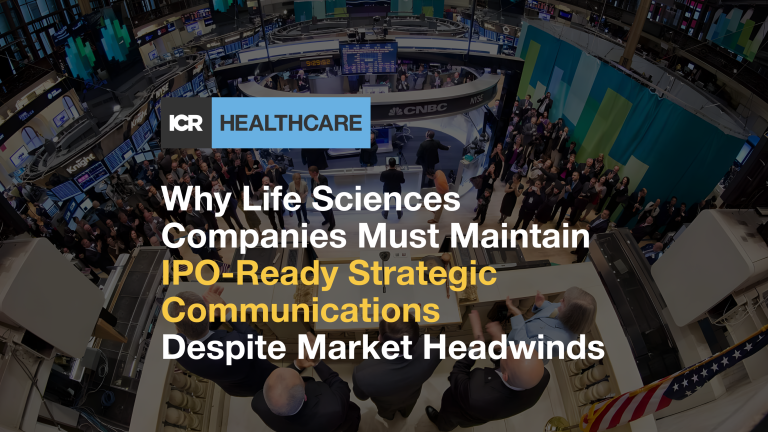While 2021 certainly had its challenges — including an ongoing response to a global pandemic, economic uncertainty, supply chain disruptions, labor shortages, and growing concern over inflation — we also saw robust capital markets activity. Given those ups and downs, what can you expect for the coming year?
In our new blog series, we explore what we might see in 2022, including the following potential trends in the insurance, staffing and human capital, aerospace and defense, and electric vehicle industries.
Insurance/Insurtech Trends
- Inflation, Omicron and the midterms: 2021 was mostly a strong year for insurance-related companies, driven by the recovery as the U.S. opened up. In recent months, while the sector continues to benefit from a hard pricing market, the macro environment has become notably murkier. Inflation hit a 30-year high in October and has shown few signs of letting up, leading to concerns about expenses. The Omicron variant is showing that COVID has also not left the scene quite yet. And with 2022 a midterm election year, political uncertainty could yet rear its head as it did in 2020. While Omicron may keep margins strong for the sector (particularly for brokers), ongoing elevated inflation has potential to create additional uncertainty in the new year.
- Sustainability of high organic growth for brokers: Brokers reported organic growth rates in 2021 seldom seen, taking advantage of a particularly hard market for pricing. While risks continue to get more and more complex in multiple sectors, current expectations are for pricing increases to abate in 2022. Given the higher base for year-over-year comparisons, strong organic growth figures will likely return to more normalized levels.
- Personal lines may benefit from higher rates: Personal lines insurance companies in 2021 were impacted by increased severity losses, in part due to higher auto body and labor costs, as well as higher frequency trends and significant catastrophe losses. Insurers have been looking to aggressively raise rates to combat the increased losses, and their efforts may begin to bear fruit in 2022. However, regulators will have a say in just how much rates can be raised, which could significantly temper any potential margin improvement.
- The future of insurtech: 2021 saw public insurtech names materially underperform compared to the broader market, as investors became very concerned about the cash burn required to sustain rapid growth, as well as considerably high loss ratios. The sector remains out of favor entering 2022, but there remains an opportunity for insurtech names to rebound if they can show that their tech and data-driven underwriting can considerably and sustainably improve their unit economics and loss ratios. For those insurtechs that are waiting on the sidelines to go public, investors will likely view them with a skeptical eye until at least one of them is able to prove they can regularly outperform market expectations.
- Attracting (and retaining) talent in an evolving hybrid work environment will be key: Continued search for talent amid work-from-home and/or hybrid work environments will persist. While the industry will look to create flexible return-to-office strategies, they will likely be challenged to retain and recruit high-level talent in a very competitive job market — particularly for those with advanced technology and data analytics skills. Key areas of focus where we expect to see strong demand for talent are cyber and healthcare.
- Continued investment in cloud computing: Although progress has been made, many insurance companies still have dated core processes due to legacy technologies. One example is fragmented data that is difficult to access, making customer and agent interactions less efficient and prone to providing a mediocre customer experience. We expect insurance companies to continue spending to shift core processes to the cloud, thereby allowing agents to more easily view all relevant customer information, streamline interactions, improve customer service and better retain customers.
Staffing and Human Capital Trends
The pandemic is likely to have a long-lasting impact on human capital management, manifesting itself in the rapid acceleration of key trends already underway pre-COVID:
- Unraveling of the traditional employer/employee arrangement: The “gig economy” has been growing for years, with more workers looking to take control of their careers by working where they want, when they want. Companies such as Uber and DoorDash have already capitalized at the lower end of the wage scale, and more recently, the pandemic has emboldened millions of white collar workers to also pursue gig work, shedding the office environment to see what they can accomplish from home. High-end on-demand staffing companies are now thriving, providing temporary accountants, IT experts, and even CFOs to come in on a project basis to complete defined tasks. Some would argue this makes for more efficient use of human capital, and that the quaint idea of lifetime employment is all but dead.
- Lower workforce participation: There’s much debate over the cause, with theories ranging from generous unemployment benefits to COVID’s shear deadliness convincing some that life is too short to spend it “picking and packing” in a warehouse, or with one’s eyes glued to a computer screen. Whatever the cause, the worker shortage is pervasive, causing everything from restaurant closures to shipping delays in the transportation industry. This, in turn, is pushing up wages, further encouraging even those who still prefer traditional employment to jump ship in search of higher compensation or greater opportunity. The “Great Resignation” is thus in full swing. At the low end of the wage spectrum, the worker shortage is hampering growth for blue collar staffing companies that lack the skilled labor (e.g., truck drivers) or unskilled labor (e.g., ditch diggers) to meet demand. At the high end, however, white collar placement or executive search firms are doing quite well as the revolving door in the c-suite drives an increasing number of search mandates. Looking ahead to 2022, we tend to believe there will be some reversion of this. For example, higher wages may eventually encourage an increase in workforce participation, and some gig workers may be lured back to traditional employers after experimenting with part-time roles. But even more likely, 2022 could mark the first year of “the new normal” in human capital management, with the gig economy forever bolstered and a greater number of workers taking control of their careers — and their daily commutes.
Aerospace and Defense Trends
- Continued nonlinear recovery: In aerospace and defense (A&D), companies largely navigated well through the unprecedented challenges of the pandemic, particularly in commercial aerospace. Improvement from the lows set in the second quarter of 2020 have been uneven and unpredictable, as additional waves of infection and variants present new challenges. As we look forward into 2022, most companies anticipate nonlinear improvement to continue. Further, most companies in A&D have been spared the inflationary effects of more commodity-driven end markets, which largely results from the highly engineered low volume but highly specialized nature of products sold.
- Shifting investor interests: Investor enthusiasm has gravitated to commercial freight, which has been strengthened by the pandemic, and defense-heavy names. In addition, a bright spot in the market has been support of next generation aerospace and defense technology, including EVTOL, commercial space, autonomous flight and supersonic travel. These areas have generated strong SPAC interest, resulting from their proprietary technology and wide addressable market.
- Impact on suppliers: For suppliers into the A&D end market, communication has been key over the past 24 months. While all of these companies have experienced some impact from the decline in commercial travel, this is a highly complex industry that does not turn on and off quickly with long lead times and contracts, and the reduction in volume was not uniform across all suppliers. In many cases, this involved unprecedented shifts in revenue and end market mix to things like freight, products, and services related to aircraft decommissioning/recommissioning, and heavier volume of related industrial products. As such, companies that navigated these complex communications well performed better and developed deeper long-term investor support.
Electric Vehicle Trends
- New models from start-up EV OEMs: Interest in electric vehicles (EVs) really seemed to inflect in 2020, with new EV original equipment manufacturers (OEMs) generally in the initial wave of energy transition SPACs. However, the rubber will really start to meet the road in 2022, as several new models from this crop of start-ups will enter the market. For example, on the passenger side, Fisker’s all-electric SUV, the Fisker Ocean, is set to start production in November (the vehicle was rolled out at the LA Auto Show in 2021), while Lucid and Rivian deliveries should ramp up following limited start of production in the second half of 2021. On the commercial side, Lordstown’s fleet-focused Endurance all-electric pick-up should hit the road in the summer.
- Strong showing from legacy OEMs: Of course, much has been made of the legacy OEMs stepping up to the plate, led in the U.S. — at least in terms of perception — by GM initially, but also more recently by Ford. Given domestic pickup truck popularity, Ford is expected to have a strong showing once its all-electric F-150 is in production starting in the spring of 2022. With reservations approaching 200,000, Ford has had to take a pause on accepting new orders. GM, meanwhile, plans to reveal its electric Silverado at CES in January (although the vehicle won’t likely be available until late 2023 at best). This, of course, is just a sliver of what’s out there, as seemingly all global OEMs have exciting models in the works, many of which will be coming to market in 2022.
Follow the entire ICR 2022 trends series on the ICR Insights blog.



